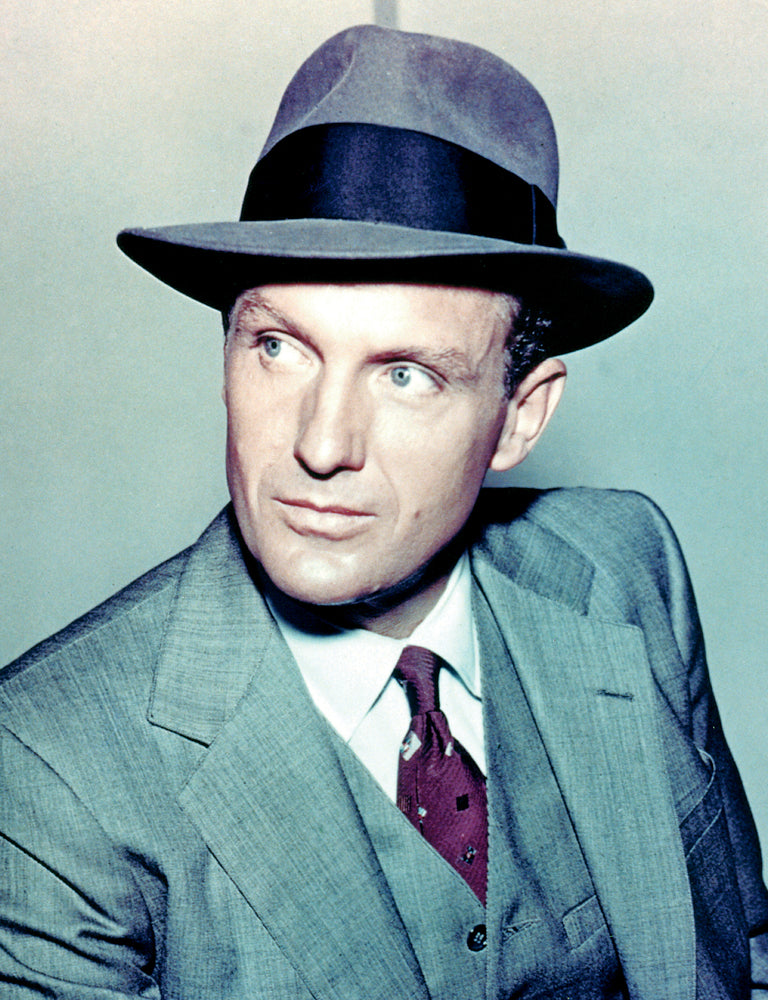
Borsalino
BORSALINO

"Bonnie and Clyde, The Conformist, Chinatown, The Godfather… these movies used the fedora for its power to immediately evoke a romantic albeit sometimes dangerous past."
In 1970, when French film director Jacques Delray happened upon a large Art Deco–style billboard for Borsalino hats, he knew he’d found the missing piece for his latest movie, a 1930s gangster picture. Delray’s working title for it was Marsiglia anni Trenta — roughly Thirties Marseilles — which he viewed as a bit pedestrian; it lacked the romanticism that defined the film noir style he revered and wanted to emulate. Delray’s previous work had centered almost exclusively on this genre, which is often as much about style as it is about substance.
Delray regarded The Maltese Falcon and Double Indemnity as the apotheosis of the moody form; along with the skill of their respective directors, John Huston and Billy Wilder, he gave a lot of credit to the movies’ costume designers for helping transform Humphrey Bogart and Fred MacMurray into the morally compromised, yet disturbingly attractive, protagonists we see on screen. Their ever-present, wide- brimmed fedoras cast a penumbra over the faces of these ambivalent characters, leaving the audience wondering who would emerge from the shadows. In Borsalino’s elegant cursive logo, Delray had found a title and an aesthetic for his movie that was synonymous with its era, both on the screen and in the streets.




Borsalino was Delray’s biggest international hit, and it spawned a sequel. Thanks to it, and such pictures as Bonnie and Clyde, The Conformist, Chinatown, and The Godfather I and II, movies of the period were full of actors wearing hats, many of them made by Borsalino. These films, Delray’s in particular, used the fedora for its power to immediately evoke a romantic, albeit sometimes dangerous, past. Strangely enough, this came at a time when most men had given up wearing a hat as part of their daily ensemble. For centuries, a hat was arguably as integral to a man’s street attire as shoes are today. Every man, regardless of his social or economic status, sported headgear. Even Chaplin’s tramp scratched out enough coin to keep a bowler on his noggin, because, really, what kind of man doesn’t wear a hat?
From the late 19th century through the mid-20th century, wearing a fedora was synonymous with masculinity, and Borsalino was synonymous with fedora, reaching a level of market recognition that only brands like Google can claim today.In the 1850s, when the young Giuseppe Borsalino set out to apprentice with a master hatmaker, he had to leave his native Piedmont in northern Italy and travel to Paris, at that time home to the finest milliners in Europe. Seven years at Berteil, a renowned hatter on the Rue du Temple, taught Giuseppe the industry’s most sophisticated techniques and practices, but perhaps more important, it broadened his vision to include the world at large. The endless stream of wealthy international consumers descending on the City of Light, ready to spend lavishly on luxury goods, opened his eyes to the enormous possibilities of the global market.

On his return to Piedmont, Giuseppe set up shop with his brother Lazzaro in the town of Alessandria. Though initially Giuseppe had to make each hat while simultaneously training his ten employees, the factory was able to produce an impressive 50 hats a day. That figure would explode after 1897, when Borsalino became an early adopter of the assembly line factory system, combining skilled workers with the latest industrial hat-making machinery imported from Manchester, England. Between the two World Wars, production jumped to more than 100,000 hats a year, enough to export aggressively around the globe. At its height, Borsalino had 2,500 employees manufacturing 2 million hats a year, which were sold in practically every country on earth.
These days, Borsalino is a much smaller business. Still based in Alessandria, it produces high-quality hats for a new generation of smartly dressed men who want to wear an elegant fedora for reasons of style, not convention. And if that broad-brimmed Borsalino lends them the aura of a dashing movie star, so much the better.



